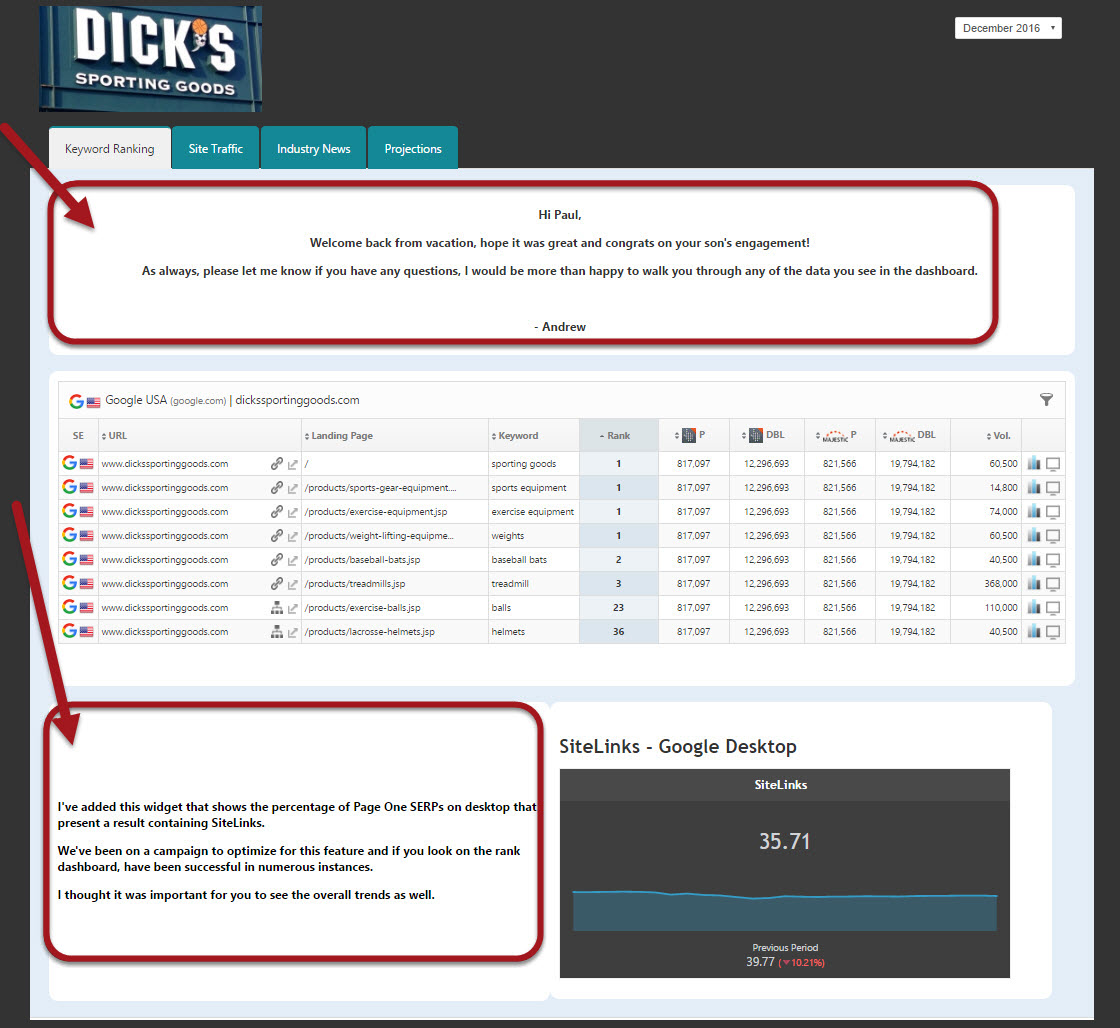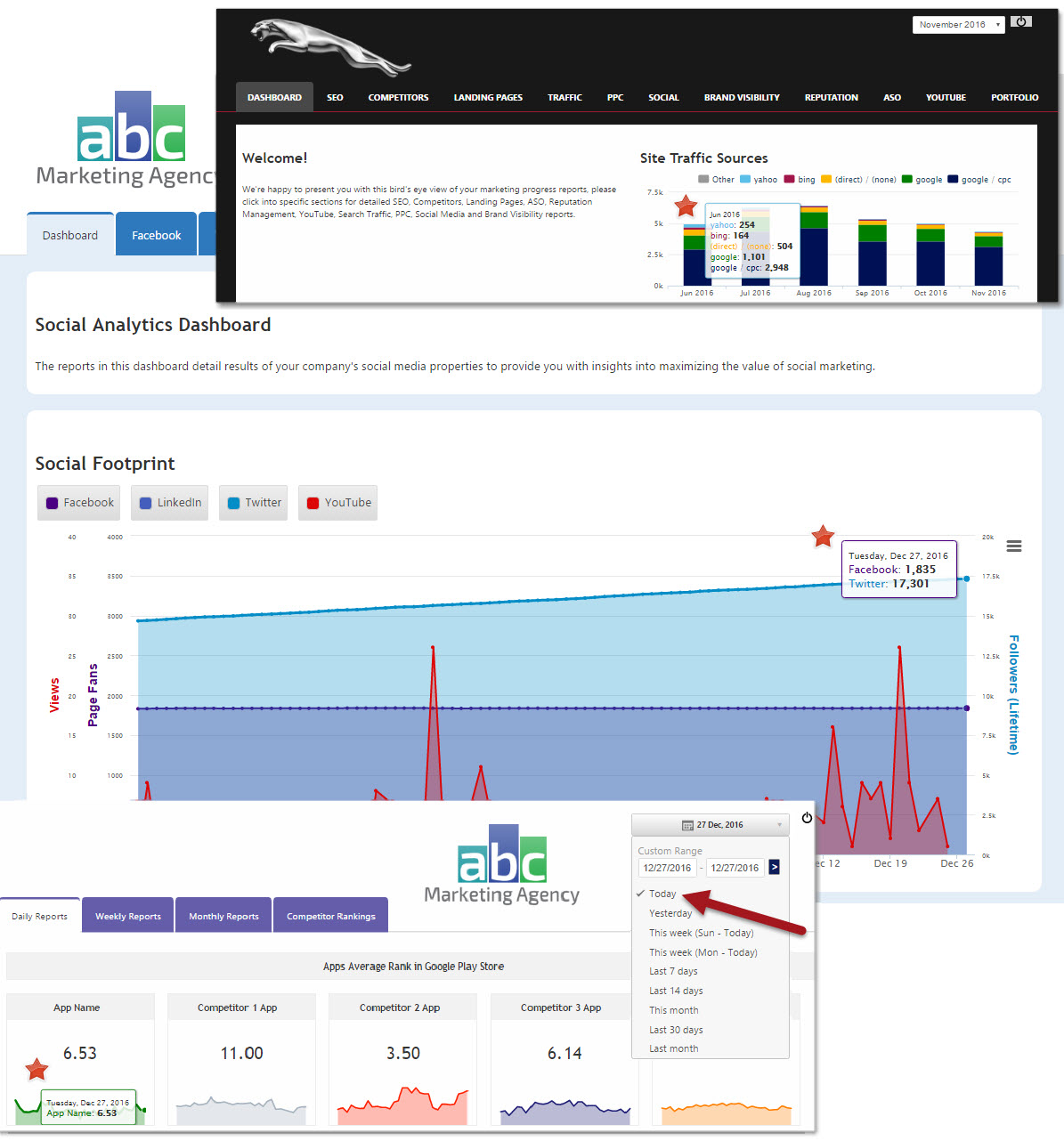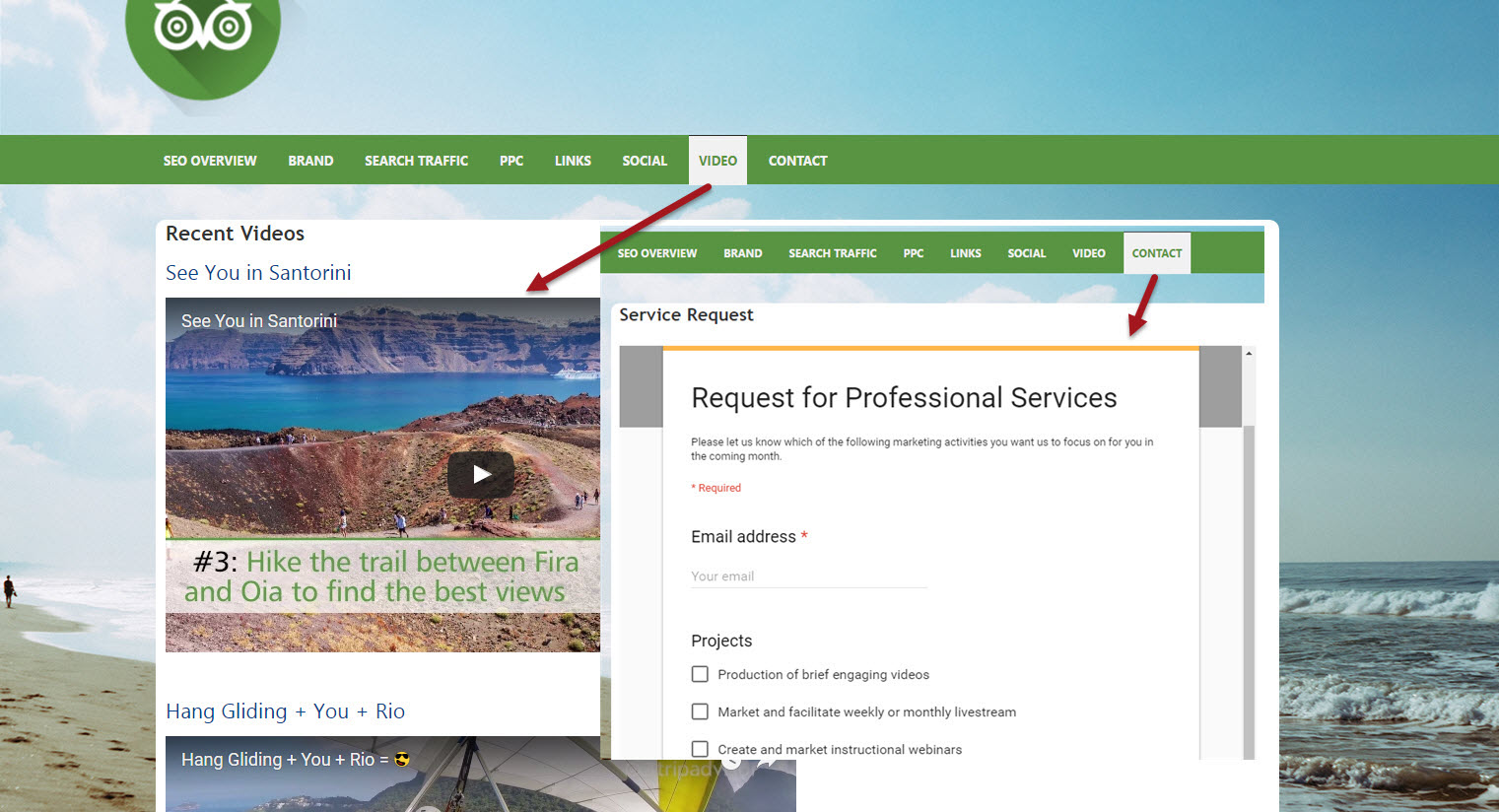Posted by
Mordy Oberstein
Each and every month you put a tremendous amount of time and effort into guiding your clients towards success. Be it a drive to push your client’s marketing campaign towards a successful end, a concentrated effort to track and improve your client’s SEO, or what not – your efforts on behalf of your clients are bar none. However, without effective communication with your clients, your efforts, noble and colossal as they may be, could be laid to waste. So then, what do you need to do in order to effectively communicate your success stories to your clients? What steps can you take to make sure that your client knows exactly how hard you’ve worked and how far you’ve taken them? What can you do to ensure that your best efforts are not wasted and ruined as a result of lackluster communication?

Speak Directly to Your Clients
You know very well that your relationship with your clients depends heavily on the chemistry between you both. There is an inherent human factor that can’t be circumvented. Simply put, your business with your clients depends upon how well you get along with them. It’s very rare for a client to discard “bedside manner” simply because of the excellent services a firm may provide. As such, you put a lot of effort into maintaining cordial relationships with your clients. Do your reports reflect this, or are they simply automatic monthly transactions that occur without much charisma?
Not utilizing your monthly reports to strengthen your relationship with your clients is a wasted opportunity. For some, these monthly reports may be the only communication they have with their clients at any given moment in time. Forgoing the chance to use the reports to act as an ambassador of sorts between you and your clients is to squander a great opportunity.

How then can you take stale data and automatic reports and turn them in a monthly relationship building ritual? Simple, the same way you always build a relationship with your clients, by talking to them. Insofar as a monthly report full of data is concerned, it means considering a client’s needs before sending them a report. It means guiding them through a report. It means speaking directly to them in a report. Subsequently, you need a report that allows you to do so. A good reporting platform should allow you the ability to insert direct dialogue.
In more clear-cut and specific terms your reports should:
- Include a greeting to your clients that can also serve as an overview of the report’s content.
- Insert dialogue that helps guide your client through complex data within the report.
- Offer explanations of the data your client will be looking at along the way, giving your data not only a personal touch, but some context as well.
If the overarching theme of your reports is your voice speaking to, guiding, and explaining the data your client is looking at, then you’ve succeeded in telling your story to your client. Really, you’ve succeeded in taking advantage of your reporting to engage your client in a dialogue, which has the effect of building a stronger bond between you both.
Ask for Feedback
As part of engaging your clients in a direct conversation, it’s important to give them the opportunity to provide feedback (as anxiety ridden as that may be). If the conversation is going to be a two-way street, then you should offer your clients the opportunity to have their voice heard. One of the best ways to do this is to embed forms or surveys right into your reports (which is why it’s important to have a reporting platform that can do so). In an effort to get helpful feedback, your success rate will most likely be in proportion to the degree of ease you offer clients in doing so. I recommend going with embedded forms or surveys that are a part of the report itself for this reason.
Give Your Clients Access to Active Data

Think about it for a second, you’re holding data that really belongs to your client, yet they don’t have the same level of access to it as you do. Obviously, you’re the one collecting the data and it’s within your discretion how to present it to a client. At the same time and at the end of the day, the data you collect is ultimately pertinent not to you, but to your clients whose business decisions depend on utilizing that data correctly.
Giving your clients true access to your data does two things:
1) It removes the inherent suspicion that you’re not presenting the full data that you’ve collected. Like it or not, there is a sort of unspoken fear that clients often have, in that they wonder if you are showing them the full data picture. Giving your clients a more complete sort of access to your data can work wonders in alleviating this fear.
2) It creates goodwill. Giving your clients the most complete form of data access possible is a powerful statement. It’s a statement which says that you want your client to have the most information possible so that they can make the most informed decisions possible. It’s a statement of care, that you care about ensuring that your client is successful, that they have the tools to be successful. Think about it like having a guest over for dinner. Sure, you could put a nice plate of food in front of them and they would be happy. At the same time, you could gush over them, offering above and beyond. Which guest do you want your clients to feel like?
Obviously, offering the fullest set of data and reports to your clients is paramount. However, that’s just quantitative, what can you do to offer your clients a qualitatively more complete data experience? The answer is active data. Why should it be that the data you see is in real-time, yet your client only sees stale and stoic data that is not as current as it could be, inherently?
By offering your clients reports that consist of active-data, updated in real-time just the way your data is, you in effect make your clients part of your success story. Think about like this, with real-time data your client can log into their report and see not what happened in the past, but what’s going on right now. It’s not only a way to offer full transparency, but it’s a way to make your client feel included in the process. You wouldn’t be telling your success story to your client, you would be telling your success story with your client. Offering that level of autonomy to your clients is invaluable in telling your success stories. It tells your clients that they can not only trust your success stories, but that they form a part of the success story. It tells them that they are a partner in your success just as you are a partner in theirs.
Most of all, showing active data helps your client become invested in the data you’re showing. Like any story, the reader needs to be engaged, what way of engaging your reader, i.e. your client, is better than affording them the ability to become a part of the story’s very telling? Unlike a report on the unchangeable past, an active data report allows your client to become invested in the constantly developing future, which is a whole new level of personal investment. No one likes being spoken to as much as they like being engaged with in a conversation. Use active data to turn your success story into an active success dialogue.
Tell the Whole – Supplement Your Data
Everyone loves a good story and don’t forget that you’re telling a story. While data is nice, and direct messages to your client essential, don’t forget to create a larger context. The data you’ve collected, due to the very nature of data, is most likely very honed in and very one-dimensional, it doesn’t tell a story… you do. You can tell a story by giving your data some context. Much like an actual story, your success story needs a plot, a setting, and some characters.

All things being equal, the data you provide your clients with exists within a larger context, i.e. an industry. When developing a narrative for your success story it’s important to give the data you’re showing context within the overall trends and movements of the industry. As such, including links to important industry news, analysis, etc. is an important part of your story, and you should include it within your reports.
Developing a narrative for your success story does not have to be limited to industry news, nor should it. It’s important to think out of the box a bit. Think about your success stories in the context of marketing… do people really want to look at a lot of text, and charts, and tables, etc., etc., etc.? As part of engaging your “reader” include graphics, pictures, and videos in your reporting to create a dynamic and engaging storyline.
Inserting various forms of media really goes well beyond user engagement. Including a video from YouTube or Vimeo can serve as a way to further extend, explain, or give context to the data within your reports. Giving your client’s a dynamic way to understand the context, the environment, that the data you are reporting on exists within is essential to creating a success story. If you don’t paint a picture with your reporting, you run the risk of delivering a set of data as opposed to a well narrated success story.
Give Your Clients Reports That Consider Their Needs
To sum up the overarching theme to what I’m saying here, when sending data over to a client, you need to consider their needs. The key word here is their needs. Not their businesses needs, not their operational needs, their needs as people (of course you should consider the aforementioned needs as well). At the end of the day “your client” is really “your person.” It may sound cliche, but when putting a set of data together you need to look beyond the business needs of your clients and focus on their personal needs as well. Above and beyond anything else, your client is a person, not the CEO of a tech firm, or a local dentist, or an online news publisher. If, in your reporting, you fail to consider the needs of your client as a person, you may lose that audience. Put it this way, your clients are just regular people with regular needs that you should consider as often as you can.
In real terms, if you don’t take into consideration the personal needs of your client’s, you run the risk of making your data stoic and meaningless. If your client is not an expert in the field that your data pertains to, no matter how comprehensive and relevant your data is, it’s worthless without an explanation. If you don’t include something within your reporting that walks your client through the data, then your report is about as useful as a screen door on a submarine. If your data is significant relative to industry trends and events, then without creating such a narrative your success story will fall short. And if you don’t engage the other person behind the screen, looking at your reports, then you and your data run the risk of being as stale as yesterday’s news.
Why We Developed the Marketing Dashboard
In light of the above, and based on real feedback from our own clients, we developed the Marketing Dashboard. In addition to being a genuinely white label marketing KPI dashboard that boasts full access to the dashboard’s HTML and CSS, what we created is a way to tell your success stories in a manner that engages your clients.
We felt that dashboard reporting, as it stood, could be taken to the next level in creative ways that focused on increased communicative abilities. What we did then was to develop a way to foster an even greater level of personal communication between you and your clients. For that reason, with the Marketing Dashboard you can insert text boxes to narrate your success story anywhere on any of the pages you create on your dashboard. Tell your clients what you were thinking along the way, why the data you’re showing is significant. Help your clients understand what it is you’re really showing them in the data and don’t let the meaning behind your “numbers” get lost along the way.

Use the Marketing Dashboard’s text boxes to develop a stronger relationship with your clients and qualify the data your present to them
Share active data with your clients. Allow them to feel a part of the process. Let them see how things are unfolding in real-time. Engage them by showing data that indicates where they stand now, in the moment (as well as in the past). Make them feel that they have a voice in how the present leads to the future, as opposed to only having a say ex post facto.

Via its hover data and ability to present real-time information, the Marketing Dashboard offers an active data experience
Supplement your data to create a success story narrative. Embed videos, industry news, links, etc. Include surveys and forms to gain direct feedback from your clients that allows them to feel empowered about the work you submit to them.

Supplement your data and engage your clients via embedded custom and interactive content
Most of all, give your clients white label KPI dashboard reporting that considers their needs.
Get Started Now!

